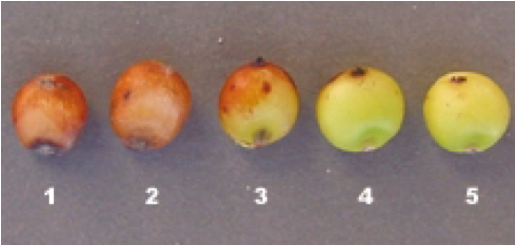Statewide
This tip was provided by Dr. Ronnie Schnell, Cropping Systems Specialist, Texas A&M AgriLife Extension, College Station.
Harvest aids can be used in grain sorghum to potentially accelerate harvest and provide uniform and more favorable harvest conditions as well as effect late-season weed control. Sodium chlorate, glyphosate and carfentrazone (Aim EC) are labeled for pre-harvest or harvest aid use in grain sorghum. Sodium chlorate is a burn down chemical that acts as a defoliant, whereas glyphosate (technically labeled for weed control) kills the entire plant, which aids in drydown. Carfentrazone can be used as a harvest aid in grain sorghum to kill and dry down troublesome broadleaf weeds (glyphosate resistant), including morningglory and various waterhemp and pigweed species. Aim EC is labeled for grain sorghum for grain and cannot be applied to sorghum grown for seed. For seed milo growers, diquat dibromide is also labeled (under various product names). For all products, consult and follow all herbicide labels for rates, timing, specific adjuvants, protective gear and safety precautions. Although limited Texas A&M AgriLife research has not demonstrated yield differences among treated and untreated grain sorghum, the ability to manage and potentially accelerate harvest can have significant advantages in Texas, especially when humid conditions slow drydown.
The primary physiological criteria for application include seed moisture below 30% AND physiological maturity, which is best determined by identifying black layer in the seed (Figure 1). Remember that kernels near the base of the head mature last. Also, tiller heads will likely mature later than primary heads and may contribute significantly to yield. Applying products too soon can reduce grain yield and quality. There are restrictions for harvest intervals when using harvest aids. In addition, harvest must be completed in a timely manner due to lodging concerns, especially when stalk rot diseases are present. Do not treat more area than can be harvested if lodging or fall storms are a concern.
A summary of grain sorghum harvest aids and their uses can be found at: http://www.agrilifebookstore.org/product-p/el-5435.htm

Figure 1. Sorghum kernels in various stages of maturity harvested from the same head from the most mature (1) to the least mature (5). The black layer is first readily visible in (3) and becomes more distinguishable as the seed loses moisture. Do not confuse black layer, which develops where the seed is attached to the plant (bottom end when in the head), with the black dot on the opposite end of the seed.








